Honglong Cai
Music
Distilling Text Style Transfer With Self-Explanation From LLMs
Mar 02, 2024



Abstract:Text Style Transfer (TST) seeks to alter the style of text while retaining its core content. Given the constraints of limited parallel datasets for TST, we propose CoTeX, a framework that leverages large language models (LLMs) alongside chain-of-thought (CoT) prompting to facilitate TST. CoTeX distills the complex rewriting and reasoning capabilities of LLMs into more streamlined models capable of working with both non-parallel and parallel data. Through experimentation across four TST datasets, CoTeX is shown to surpass traditional supervised fine-tuning and knowledge distillation methods, particularly in low-resource settings. We conduct a comprehensive evaluation, comparing CoTeX against current unsupervised, supervised, in-context learning (ICL) techniques, and instruction-tuned LLMs. Furthermore, CoTeX distinguishes itself by offering transparent explanations for its style transfer process.
Gemini: A Family of Highly Capable Multimodal Models
Dec 19, 2023Abstract:This report introduces a new family of multimodal models, Gemini, that exhibit remarkable capabilities across image, audio, video, and text understanding. The Gemini family consists of Ultra, Pro, and Nano sizes, suitable for applications ranging from complex reasoning tasks to on-device memory-constrained use-cases. Evaluation on a broad range of benchmarks shows that our most-capable Gemini Ultra model advances the state of the art in 30 of 32 of these benchmarks - notably being the first model to achieve human-expert performance on the well-studied exam benchmark MMLU, and improving the state of the art in every one of the 20 multimodal benchmarks we examined. We believe that the new capabilities of Gemini models in cross-modal reasoning and language understanding will enable a wide variety of use cases and we discuss our approach toward deploying them responsibly to users.
VMRFANet:View-Specific Multi-Receptive Field Attention Network for Person Re-identification
Jan 21, 2020
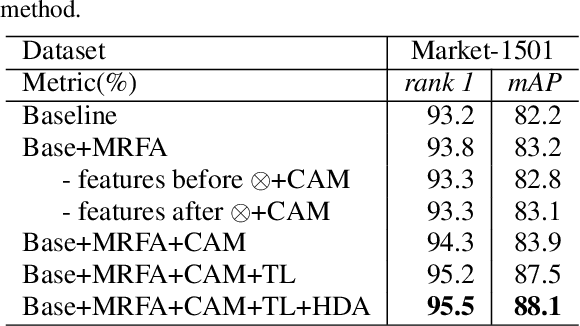
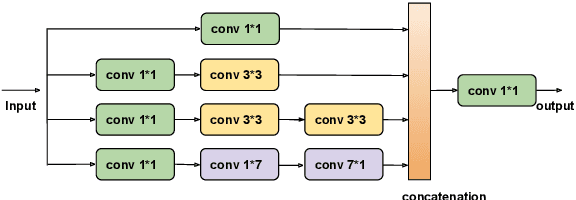
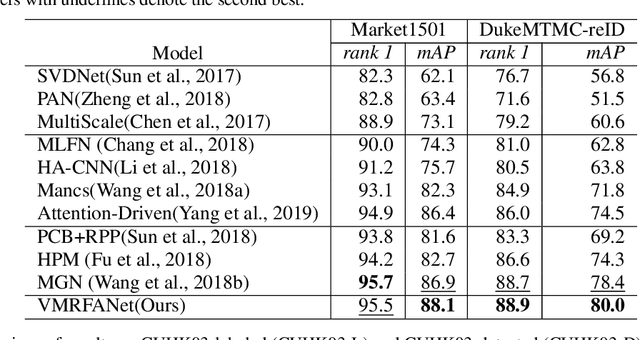
Abstract:Person re-identification (re-ID) aims to retrieve the same person across different cameras. In practice, it still remains a challenging task due to background clutter, variations on body poses and view conditions, inaccurate bounding box detection, etc. To tackle these issues, in this paper, we propose a novel multi-receptive field attention (MRFA) module that utilizes filters of various sizes to help network focusing on informative pixels. Besides, we present a view-specific mechanism that guides attention module to handle the variation of view conditions. Moreover, we introduce a Gaussian horizontal random cropping/padding method which further improves the robustness of our proposed network. Comprehensive experiments demonstrate the effectiveness of each component. Our method achieves 95.5% / 88.1% in rank-1 / mAP on Market-1501, 88.9% / 80.0% on DukeMTMC-reID, 81.1% / 78.8% on CUHK03 labeled dataset and 78.9% / 75.3% on CUHK03 detected dataset, outperforming current state-of-the-art methods.
Multi-Scale Body-Part Mask Guided Attention for Person Re-identification
Apr 24, 2019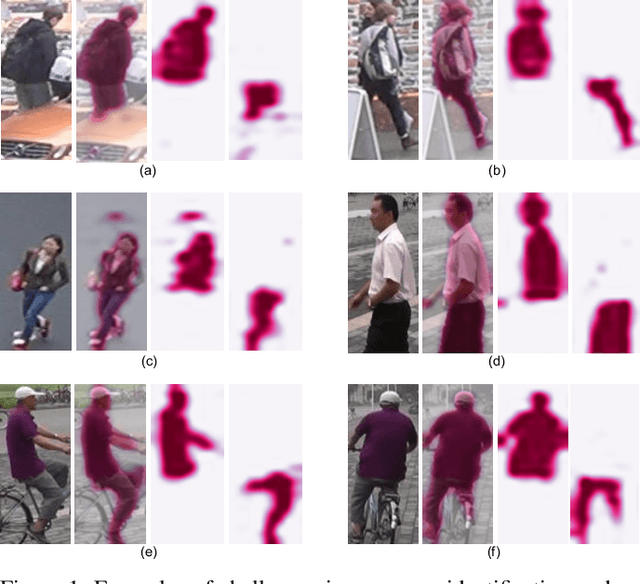
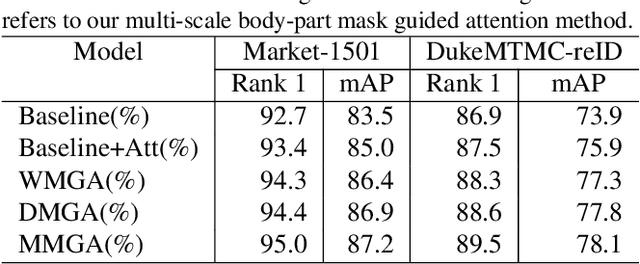
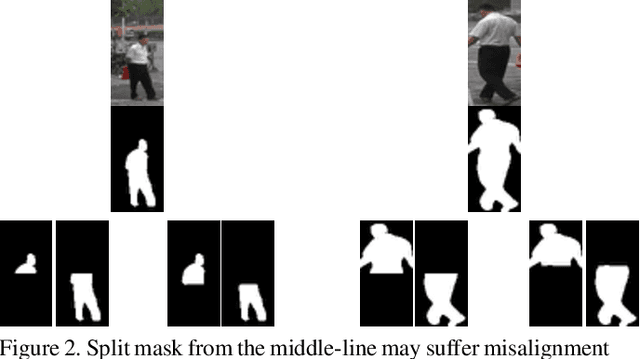
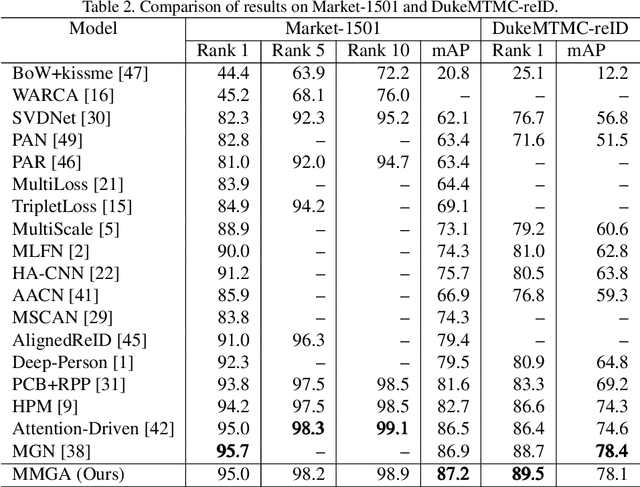
Abstract:Person re-identification becomes a more and more important task due to its wide applications. In practice, person re-identification still remains challenging due to the variation of person pose, different lighting, occlusion, misalignment, background clutter, etc. In this paper, we propose a multi-scale body-part mask guided attention network (MMGA), which jointly learns whole-body and part body attention to help extract global and local features simultaneously. In MMGA, body-part masks are used to guide the training of corresponding attention. Experiments show that our proposed method can reduce the negative influence of variation of person pose, misalignment and background clutter. Our method achieves rank-1/mAP of 95.0%/87.2% on the Market1501 dataset, 89.5%/78.1% on the DukeMTMC-reID dataset, outperforming current state-of-the-art methods.
 Add to Chrome
Add to Chrome Add to Firefox
Add to Firefox Add to Edge
Add to Edge